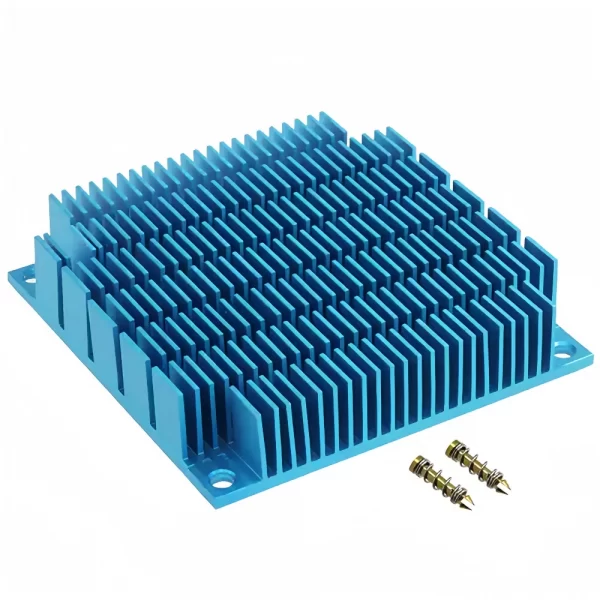Address
304 North Cardinal
St. Dorchester Center, MA 02124
Work Hours
Monday to Friday: 7AM - 7PM
Weekend: 10AM - 5PM
Address
304 North Cardinal
St. Dorchester Center, MA 02124
Work Hours
Monday to Friday: 7AM - 7PM
Weekend: 10AM - 5PM

Aluminum Heat Sink Extrusion is a key manufacturing process. This article explores the essential steps, from heating the billet to shaping the aluminum. Learn about post-extrusion processes like cutting, deburring, and surface finishing to enhance performance. Discover how quality control ensures high standards. Optimize your heat sink production with this comprehensive guide, ideal for professionals seeking efficient and reliable solutions. Enhance your understanding of Aluminum Heat Sink Extrusion today!
We make a lot of these! What does it take to make an aluminum heat sink through extrusion?
Aluminum heat sink extrusion is how we create those cooling devices. We take aluminum and push it through a die to make the shape we want. This is important in my factory so we can produce high quality parts.
So, how do we do it? Let’s take a closer look.
What exactly happens when we make an aluminum heat sink using extrusion? I’ll break it down.
I think it starts with heating up the aluminum. Then, we force it through a die to create the shape. After that, we cool it down and cut it to the right size. Each step is important to make a good heat sink.
Let’s dive deeper into the key steps in the aluminum heat sink extrusion process. Understanding these steps will help you appreciate the precision and engineering involved.
The first step is to heat the aluminum billet to a high temperature.
Temperature Control: The temperature must be carefully controlled to make sure the aluminum is soft enough to extrude.
Uniform Heating: The billet must be heated evenly to prevent any defects.
Billet Size: The size of the billet depends on the size of the heat sink being produced.
The heated aluminum is then pushed through a die to create the desired shape.
| Process Feature | Description | Benefit |
| Die Design | The die is a tool with a specific shape that the aluminum is forced through. | Determines the shape of the heat sink fins and base. |
| Extrusion Force | The amount of force required to push the aluminum through the die. | Depends on the aluminum alloy, billet temperature, and die design. |
| Extrusion Speed | The speed at which the aluminum is pushed through the die. | Affects the surface finish and dimensional accuracy of the heat sink. |
The extruded aluminum is then cooled and cut to the required length.
Cooling Methods: Air cooling or water cooling can be used to cool the aluminum.
Cutting Precision: Precise cutting is important to ensure the heat sink meets the required dimensions.
Cutting Tools: Saws or other cutting tools are used to cut the aluminum.
Quality control is an important part of the extrusion process.
Dimensional Checks: The dimensions of the heat sink are checked to make sure they meet the specifications.
Surface Finish Inspection: The surface finish is inspected for any defects.
Material Testing: The material properties of the aluminum are tested to make sure they meet the requirements.
In my factory, we have strict quality control procedures to ensure that our extruded aluminum heat sinks meet the highest standards.
What happens after we extrude the aluminum heat sink? Let’s talk about the extra steps.
I think the most common steps are cutting it to the right length and cleaning it up. We might also anodize it to make it look better and protect it from corrosion. These steps help us make a finished product that’s ready to use.
Let’s dive deeper into the common post-extrusion processes for aluminum heat sinks. These processes enhance the performance, appearance, and durability of the heat sinks.
The extruded aluminum is cut to the required length using saws or other cutting tools.
| Cutting Method | Description | Benefit |
| Saw Cutting | Uses a saw blade to cut the aluminum. | Provides a clean and accurate cut. |
| Shearing | Uses a shearing blade to cut the aluminum. | Fast and efficient, but may not be as precise as saw cutting. |
| Laser Cutting | Uses a laser beam to cut the aluminum. | Provides a very precise and clean cut, but can be more expensive than other methods. |
Deburring removes any sharp edges or burrs from the cut aluminum.
Manual Deburring: Uses hand tools to remove burrs.
Automated Deburring: Uses machines to remove burrs.
Surface finishing improves the appearance and performance of the heat sink.
Anodizing: Creates a protective oxide layer on the aluminum surface. This improves corrosion resistance and can also add color.
Powder Coating: Applies a layer of powder to the aluminum surface. This provides a durable and attractive finish.
Painting: Applies a liquid paint to the aluminum surface. This can be used to create a variety of colors and finishes.
Machining can be used to create specific features on the heat sink, such as mounting holes or grooves.
CNC Machining: Uses computer-controlled machines to precisely shape the aluminum.
Drilling: Creates holes for mounting the heat sink to electronic components.
Milling: Creates grooves or other features on the heat sink surface.
In my factory, we offer a variety of post-extrusion processes to meet our clients’ specific needs. We can provide heat sinks that are ready to use right out of the box.
Aluminum heat sink extrusion is a good way to make cooling devices. It lets us make effective and custom heat sinks.